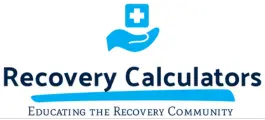Understanding the Critical Illness Withdrawal Assessment (CIWA) scale is essential for both healthcare professionals and those involved in the care of individuals experiencing alcohol withdrawal. At our core, we strive to empower and educate on the vital tools and resources necessary for effective addiction recovery management. The CIWA scale is one such tool—an invaluable resource designed to safely and accurately monitor symptoms of alcohol withdrawal, aiding in the timely intervention and prevention of severe withdrawal complications.
Proper use of the CIWA scale can significantly alter the outcome for a patient in withdrawal by providing a structured, objective method for assessing the severity of withdrawal. It guides the clinical decisions regarding the need for medication, the type of medication, and the setting in which withdrawal management should be conducted. By understanding how to apply the CIWA scale correctly and interpreting its results, care providers can improve the safety and comfort of individuals undergoing alcohol detox, ultimately facilitating a smoother and more controlled recovery path.
As we delve deeper into the components and uses of the CIWA scale, it is our aim to present this information clearly and helpfully, ensuring that our readers are well-equipped to utilize this essential tool in the context of addiction recovery.
What is the CIWA Scale and Why is it Important?
The Clinical Institute Withdrawal Assessment for Alcohol (CIWA) scale is a critical tool that we utilize to assess the severity of alcohol withdrawal in individuals. It is designed to be both comprehensive and straightforward, allowing healthcare professionals to quickly gauge withdrawal symptoms and their severity. The importance of the CIWA scale lies in its ability to prevent complications during the detoxification process by providing timely and appropriate medical interventions.
Using the CIWA scale, we can tailor detoxification treatments to individual needs, enhancing safety and efficacy. This tailored approach prevents the one-size-fits-all method of handling withdrawal, which can often lead to under-treatment or overtreatment, each with its own set of risks. By scoring the severity of symptoms ranging from nausea and tremors to agitation and auditory disturbances, the CIWA scale lays the groundwork for a recovery plan that is as responsive as it is robust.
Key Components of the CIWA Scale Assessment
The effectiveness of the CIWA scale stems from its detailed assessment criteria, which cover a range of symptoms critical to identifying and managing alcohol withdrawal. Here are the key components that we carefully evaluate:
1. Agitation: We assess the patient’s level of restlessness and irritability, which can be early signs of withdrawal.
2. Anxiety: This involves gauging the patient’s nervousness or fear, which is common in withdrawal scenarios.
3. Auditory Disturbances: We check for any hearing impairments or the presence of hallucinations, which can indicate severe withdrawal needs.
4. Visual Disturbances: This includes monitoring for sensitivity to light or visual hallucinations.
5. Tactile Disturbances: Checking for sensations like itching or numbness that might affect the patient.
6. Headache: We assess the intensity and persistence of headaches, which can impact patient comfort and withdrawal progress.
7. Sweating: Observing the extent of sweating helps understand the body’s response to detoxification.
8. Orientation and Clouded Sensorium: It’s crucial to evaluate the patient’s awareness of surroundings and cognitive clarity.
These components are meticulously scored based on severity from 0-7 or 0-4, depending on the symptom. The total score then informs our medical team of the next steps, ensuring every patient receives the care they need based on their specific symptoms and the severity of withdrawal. Through this systematic assessment, we can significantly improve the outcomes of detoxification and subsequent rehabilitation programs.
How to Use the CIWA Scale Effectively in Alcohol Withdrawal Management
In our practice, effective use of the CIWA scale is paramount for managing alcohol withdrawal safely and successfully. First and foremost, consistent assessments are crucial. We conduct evaluations using the CIWA scale at regular intervals, typically every four hours, to monitor the progress of withdrawal symptoms effectively. This frequency can be adjusted based on the severity of the symptoms and the specific needs of the patient.
Training is another critical aspect of using the CIWA scale effectively. Our team comprises healthcare professionals thoroughly trained in applying the CIWA scale. This training ensures that each member can accurately assess and interpret the symptoms of alcohol withdrawal. Through this rigorous and standardized approach, we ensure that all patients receive appropriate and timely medical intervention based on their exact needs.
CIWA Scale: Interpreting Results and Next Steps in Treatment
Interpreting the results of the CIWA scale involves a careful analysis of the accumulated scores from the assessment. Scores of 8 or below typically indicate mild withdrawal symptoms, which may require minimal medication and can often be managed with supportive care alone. Scores between 9 and 15 denote moderate withdrawal and may necessitate a balanced approach of both medication and supportive care. Scores above 15 suggest severe withdrawal, often requiring immediate and intensive medical intervention.
Based on the results, we map out the next steps, whether it involves initiating medications such as benzodiazepines to help manage symptoms, adjusting existing treatment protocols, or recommending hospitalization for extreme cases. Our goal is to stabilize the patient effectively and to prepare them for the upcoming stages of recovery, which might include therapy, counseling, and support groups.
Conclusion
The CIWA scale is more than just a tool; it’s an integral part of our commitment to providing personalized, empathetic, and effective treatment for alcohol dependency. By understanding and utilizing this scale, we strengthen our capabilities in managing alcohol withdrawal more safely and efficiently, ensuring a better path to recovery for all our clients. As we continue to support individuals on their journey to sobriety, we remind you that no one is alone in this battle.
If you or someone you know is struggling with alcohol dependency, turn to us at Recovery Calculators. We are here to guide you through every step of the process with the tools and resources necessary for recovery. Together, let’s map out a path toward a healthier, more fulfilling life.


